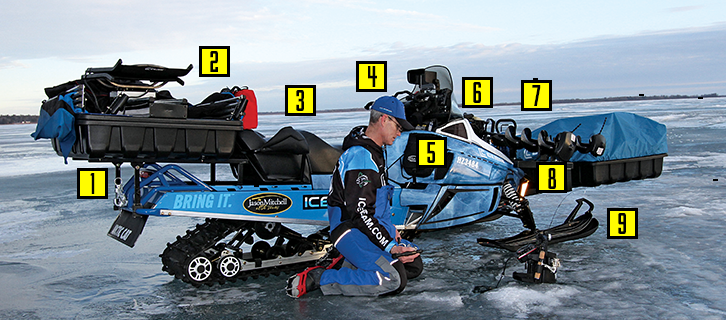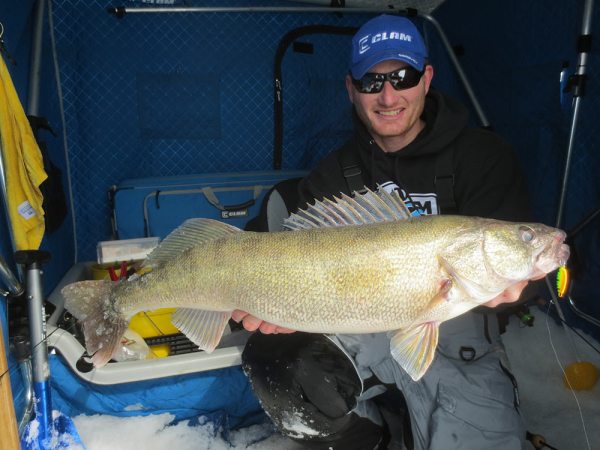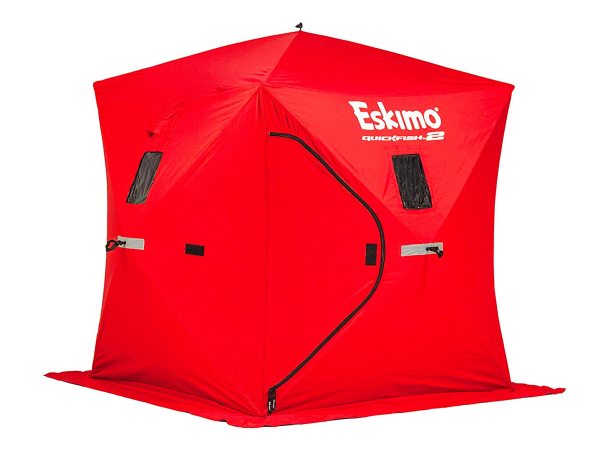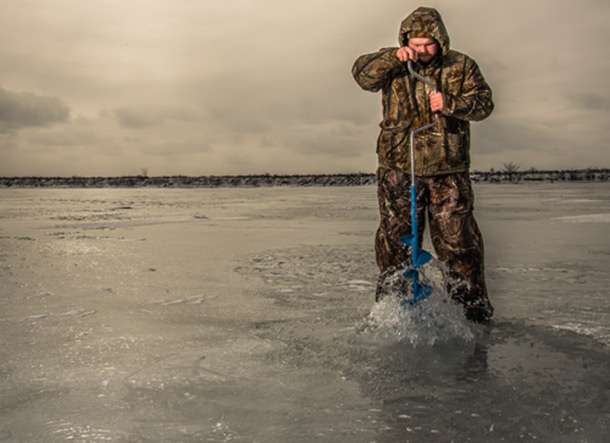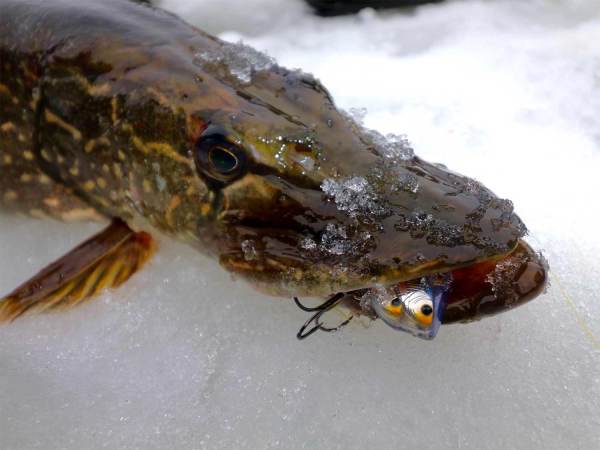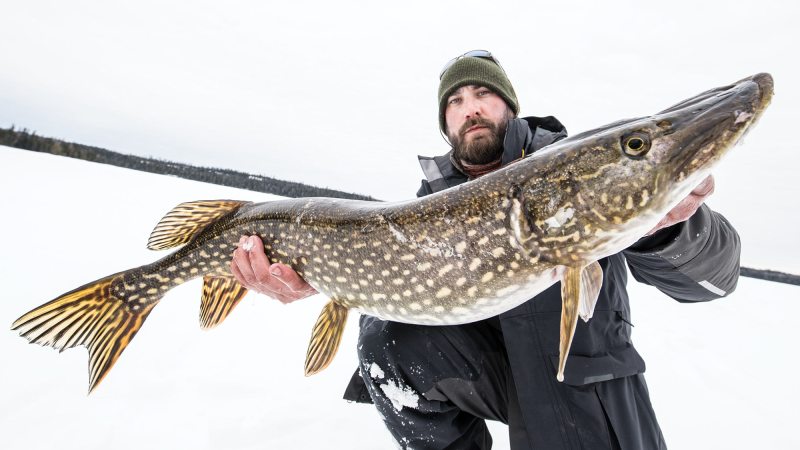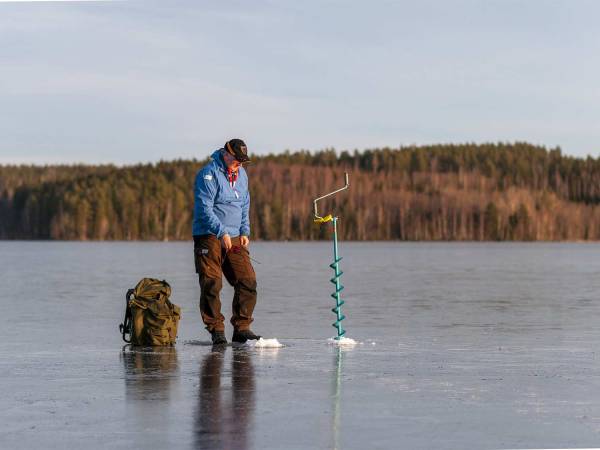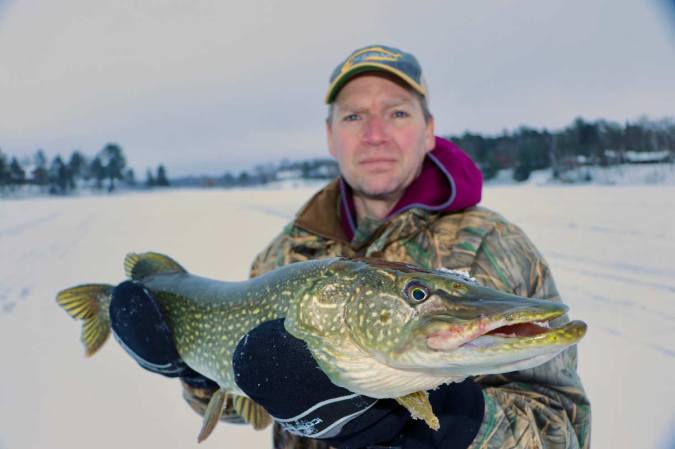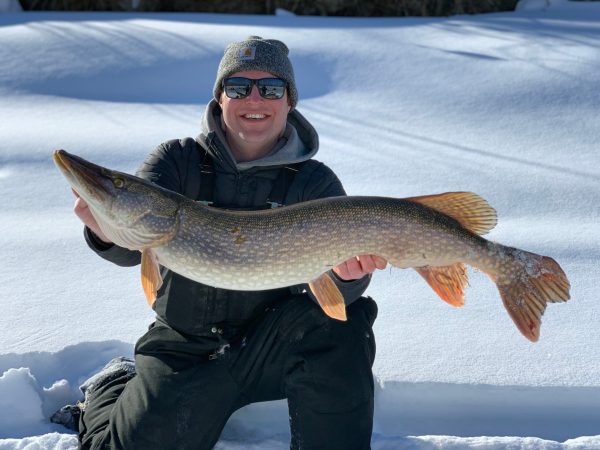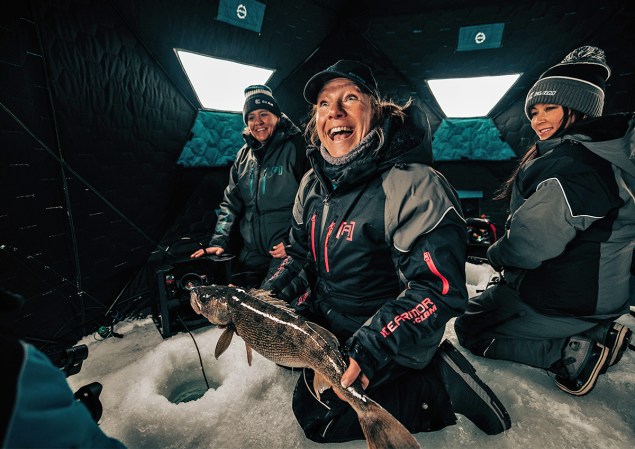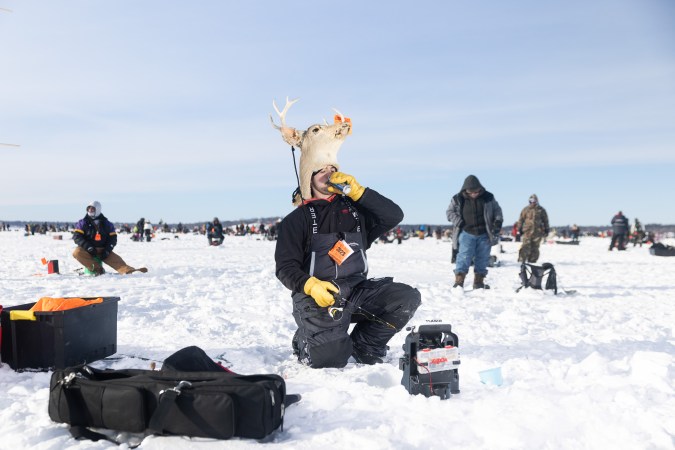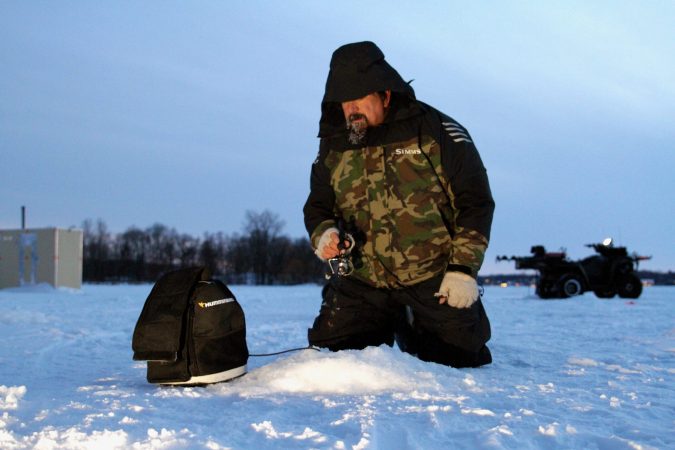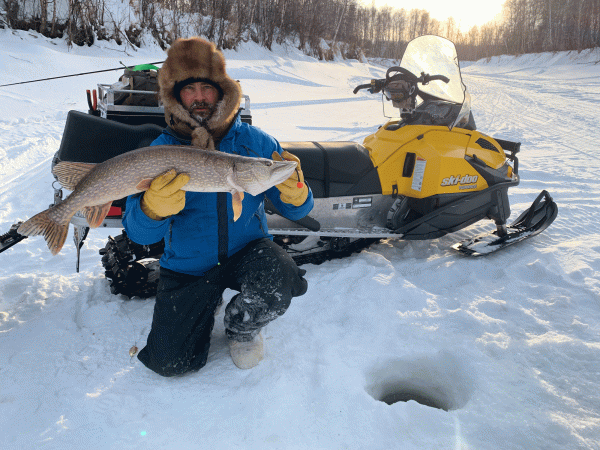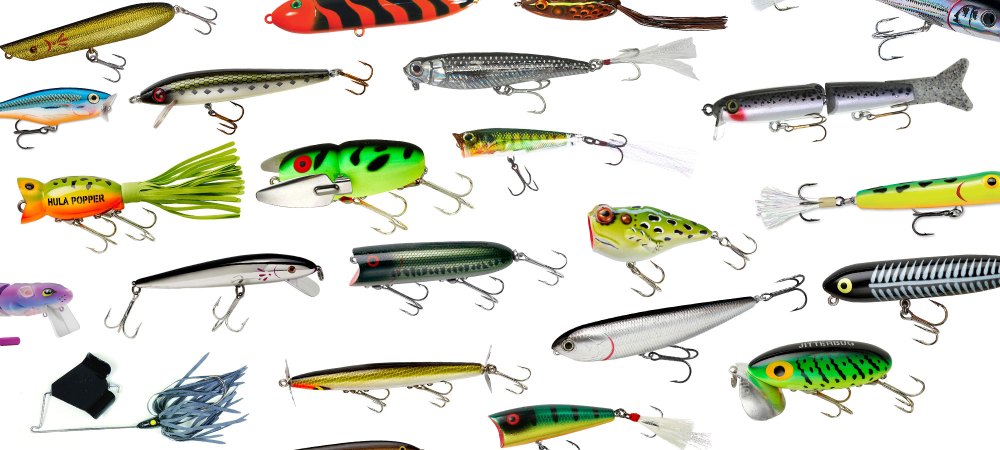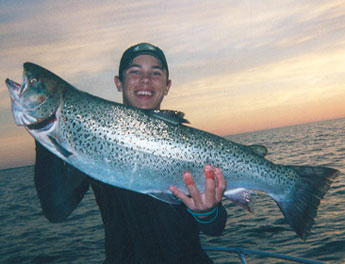Pardon the pun, but there’s no cooler transportation than a snowmobile—at least where icefishing is concerned. Fun aside, there’s also no disputing the logistical benefits of a ride that defies winter’s worst weather to carry anglers and their gear to and from the day’s objectives.
A well-equipped snowmobile is both workhorse and trail mount. For most, the strategy involves using the snowmobile for big runs and then working an area on foot. From a parked machine, lightweight pop-up shelters and portable electronics are easy to carry from hole to hole.
Racing and thrill rides seldom coincide with the ice angler’s need for functional efficiency, so top-end speed is probably a mid-list consideration. More important are stability, accessibility, and storage space.
A larger machine offers more room for customization, from high-tech electronics to utilitarian gear racks fore and aft. However, you can get the job done with just about any trail model. Just picture how you’ll be using the snowmobile for your style of icefishing and then equip and accessorize accordingly.
SLED SETUP
1. Tow hitch
The ride’s bumpy back there, so tow your sturdier stuff and load delicate items on the machine.
2. Rear gear rack
An extra accessory tub serves to hold fish, extra traps, and other gear. An elevated position maximizes speed, as opposed to dragging a tub.
3. Seat
Under-seat storage holds spare tackle, extra clothing, safety rope, ice cleats, etc.
4. Extra rod holders
PVC pipe will suffice, but gripping surfaces (like you’d find on a broom holder) keep small rods from bouncing out while running. option: A rod case stored on the gear rack.
5. Gear pouches
Multi-functional protection for transducers and your underwater camera lens when running. Just pull up, drill holes, and drop the heads in the hole.
6. Dash electronics
Flasher, GPS, and an underwater camera facilitate hole hopping.
7. Auger mounts
Secure augers with bungee cords or lockable latches.
8. Front rack
Extra storage is nice, but a sled’s front end hits a lot of snow and slush, so avoid stowing anything fragile here.
9. Track
Wider is better for maximum contact over varying levels of snow and slush. You want long tracks for better contact with sketchy surfaces. You might sacrifice speed for stability to avoid bogging down. Tracks typically intake natural moisture for lubrication, but on bare ice, squirting dish soap into tracks helps prevent seizing.
